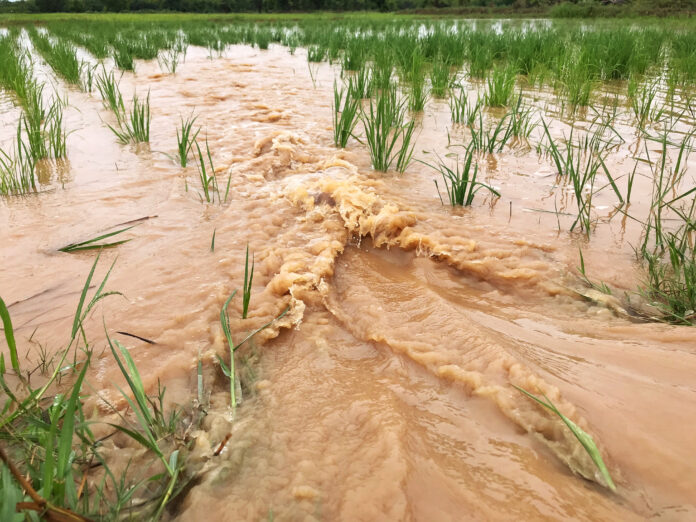The agriculture sector continues to reel from compounding weather-related damage, with total losses now reaching ₱1.84 billion due to the combined effects of the southwest monsoon and Tropical Cyclones Crising, Dante, and Emong, according to a Sunday morning advisory from the Disaster Risk Reduction and Management Operations Center of the Department of Agriculture (DA).
The latest figures underscore the mounting pressure extreme weather events are exerting on rural livelihoods and national food security. A total of 59,749 farmers have been affected across 55,181 hectares of farmland, with a reported production loss of 43,689 metric tons (MT). While 73 percent of the affected farms have potential for recovery, the remaining 14,736 hectares have been classified as irrecoverable.
Rice production bore the brunt of the damage, with losses valued at ₱990.34 million across 52,210 hectares—accounting for 35,371 MT of lost yield. Fisheries followed with ₱516.57 million in damage, impacting 2,399 fisherfolk. Affected species and equipment include tilapia, siganid, catfish, mudcrab, prawns, seaweed, boats, fish cages, and dikes.
High-value crops reported ₱224.13 million in losses over 1,137 hectares, while corn incurred ₱66.32 million in damage across 1,802 hectares. The livestock and poultry sector suffered ₱12.66 million in losses affecting nearly 7,500 animals. Cassava, irrigation systems, machinery, and infrastructure also reported combined damage worth over ₱26 million.
In response to the escalating situation, the DA has rolled out ₱653.01 million in assistance, including the distribution of agricultural inputs such as seeds, seedlings, and fingerlings. Additionally, 43,940 bags of rice from the National Food Authority have been dispatched to affected LGUs across Luzon and parts of Visayas.
A quick response fund remains available to support rehabilitation efforts. Financial instruments from the Agricultural Credit Policy Council include a ₱400 million Survival and Recovery Loan Program, offering zero-interest loans of up to ₱25,000 over three years. The Philippine Crop Insurance Corp. has also allocated ₱268 million for indemnification of nearly 46,000 insured farmers.
The DA emphasized continued coordination with local governments to monitor supply chain disruptions and mitigate further flooding risks. It is also tracking agricultural commodity prices, although the agency has not yet commented on the likely inflationary impact of the nearly ₱2-billion damage total.
Agriculture Secretary Francisco Tiu Laurel Jr. earlier ordered agencies to “work double time” to help communities recover, saying, “More than just providing assistance, our goal is to help farmers and fisherfolk quickly return to normal.”
Meanwhile, the National Grid Corporation of the Philippines (NGCP) reported that power transmission services in Luzon have been normalized. The 69kV Bacnotan–Bulala line was restored as of 10:47 a.m. on Saturday, while the 115kV Bauang–San Fernandoline was partially re-energized.
NGCP assured the public of ongoing monitoring and readiness to activate its disaster response protocols in anticipation of future storms.
As the country moves deeper into the wet season, both recovery efforts and climate-resilient policy interventions are expected to come under greater scrutiny.







